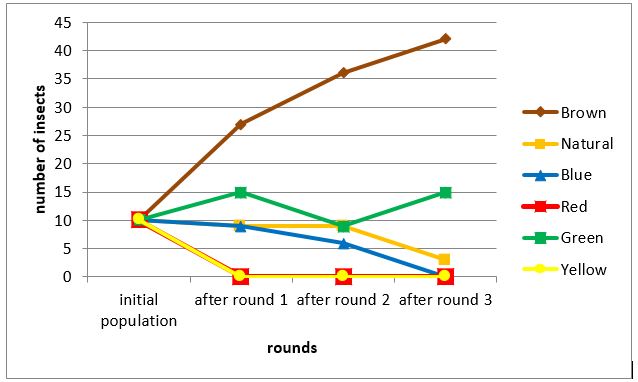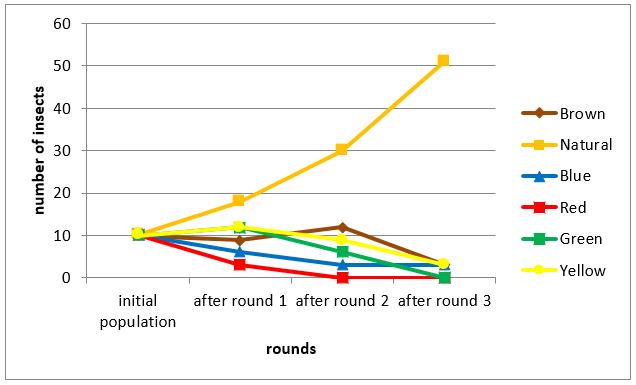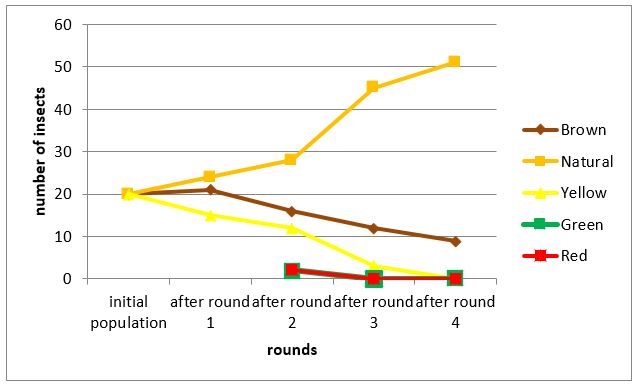 All papers examples
All papers examples
Disciplines

- MLA
- APA
- Master's
- Undergraduate
- High School
- PhD
- Harvard
- Biology
- Art
- Drama
- Movies
- Theatre
- Painting
- Music
- Architecture
- Dance
- Design
- History
- American History
- Asian History
- Literature
- Antique Literature
- American Literature
- Asian Literature
- Classic English Literature
- World Literature
- Creative Writing
- English
- Linguistics
- Law
- Criminal Justice
- Legal Issues
- Ethics
- Philosophy
- Religion
- Theology
- Anthropology
- Archaeology
- Economics
- Tourism
- Political Science
- World Affairs
- Psychology
- Sociology
- African-American Studies
- East European Studies
- Latin-American Studies
- Native-American Studies
- West European Studies
- Family and Consumer Science
- Social Issues
- Women and Gender Studies
- Social Work
- Natural Sciences
- Anatomy
- Zoology
- Ecology
- Chemistry
- Pharmacology
- Earth science
- Geography
- Geology
- Astronomy
- Physics
- Agriculture
- Agricultural Studies
- Computer Science
- Internet
- IT Management
- Web Design
- Mathematics
- Business
- Accounting
- Finance
- Investments
- Logistics
- Trade
- Management
- Marketing
- Engineering and Technology
- Engineering
- Technology
- Aeronautics
- Aviation
- Medicine and Health
- Alternative Medicine
- Healthcare
- Nursing
- Nutrition
- Communications and Media
- Advertising
- Communication Strategies
- Journalism
- Public Relations
- Education
- Educational Theories
- Pedagogy
- Teacher's Career
- Statistics
- Chicago/Turabian
- Nature
- Company Analysis
- Sport
- Paintings
- E-commerce
- Holocaust
- Education Theories
- Fashion
- Shakespeare
- Canadian Studies
- Science
- Food Safety
- Relation of Global Warming and Extreme Weather Condition
Paper Types

- Movie Review
- Essay
- Admission Essay
- Annotated Bibliography
- Application Essay
- Article Critique
- Article Review
- Article Writing
- Assessment
- Book Review
- Business Plan
- Business Proposal
- Capstone Project
- Case Study
- Coursework
- Cover Letter
- Creative Essay
- Dissertation
- Dissertation - Abstract
- Dissertation - Conclusion
- Dissertation - Discussion
- Dissertation - Hypothesis
- Dissertation - Introduction
- Dissertation - Literature
- Dissertation - Methodology
- Dissertation - Results
- GCSE Coursework
- Grant Proposal
- Admission Essay
- Annotated Bibliography
- Application Essay
- Article
- Article Critique
- Article Review
- Article Writing
- Assessment
- Book Review
- Business Plan
- Business Proposal
- Capstone Project
- Case Study
- Coursework
- Cover Letter
- Creative Essay
- Dissertation
- Dissertation - Abstract
- Dissertation - Conclusion
- Dissertation - Discussion
- Dissertation - Hypothesis
- Dissertation - Introduction
- Dissertation - Literature
- Dissertation - Methodology
- Dissertation - Results
- Essay
- GCSE Coursework
- Grant Proposal
- Interview
- Lab Report
- Literature Review
- Marketing Plan
- Math Problem
- Movie Analysis
- Movie Review
- Multiple Choice Quiz
- Online Quiz
- Outline
- Personal Statement
- Poem
- Power Point Presentation
- Power Point Presentation With Speaker Notes
- Questionnaire
- Quiz
- Reaction Paper
- Research Paper
- Research Proposal
- Resume
- Speech
- Statistics problem
- SWOT analysis
- Term Paper
- Thesis Paper
- Accounting
- Advertising
- Aeronautics
- African-American Studies
- Agricultural Studies
- Agriculture
- Alternative Medicine
- American History
- American Literature
- Anatomy
- Anthropology
- Antique Literature
- APA
- Archaeology
- Architecture
- Art
- Asian History
- Asian Literature
- Astronomy
- Aviation
- Biology
- Business
- Canadian Studies
- Chemistry
- Chicago/Turabian
- Classic English Literature
- Communication Strategies
- Communications and Media
- Company Analysis
- Computer Science
- Creative Writing
- Criminal Justice
- Dance
- Design
- Drama
- E-commerce
- Earth science
- East European Studies
- Ecology
- Economics
- Education
- Education Theories
- Educational Theories
- Engineering
- Engineering and Technology
- English
- Ethics
- Family and Consumer Science
- Fashion
- Finance
- Food Safety
- Geography
- Geology
- Harvard
- Healthcare
- High School
- History
- Holocaust
- Internet
- Investments
- IT Management
- Journalism
- Latin-American Studies
- Law
- Legal Issues
- Linguistics
- Literature
- Logistics
- Management
- Marketing
- Master's
- Mathematics
- Medicine and Health
- MLA
- Movies
- Music
- Native-American Studies
- Natural Sciences
- Nature
- Nursing
- Nutrition
- Painting
- Paintings
- Pedagogy
- Pharmacology
- PhD
- Philosophy
- Physics
- Political Science
- Psychology
- Public Relations
- Relation of Global Warming and Extreme Weather Condition
- Religion
- Science
- Shakespeare
- Social Issues
- Social Work
- Sociology
- Sport
- Statistics
- Teacher's Career
- Technology
- Theatre
- Theology
- Tourism
- Trade
- Undergraduate
- Web Design
- West European Studies
- Women and Gender Studies
- World Affairs
- World Literature
- Zoology
Natural Selection in an Artificial Population, Lab Report Example
Hire a Writer for Custom Lab Report
Use 10% Off Discount: "custom10" in 1 Click 👇
You are free to use it as an inspiration or a source for your own work.

Simulating Insect Natural Selection in an Artificial Bird Predation Environment
Introduction
Genes are notably the instructions on chromosomes that specifically instruct an organism’s cells how to function for the specie it works for. Meanwhile, alleles are variations in gene types that are noted for producing particular genotypes. In relative connection with genotype is a phenotype which is noted as the process by which genes are expressed in the organism. It has been claimed by scientists who believed in the theory of evolution that phenotypes have the capability to be passed on to other developing species through the sense of adaptation.
To be able to undergo a process of natural selection and adaptation, Selective environmental forces stand to be the circumstances within the habitat of the organism that either hinder or promote a particular phenotype. In relation to this discovery, it has been recognized that adaptive evolution is the process of genetic change that is influenced by selective environmental forces. Thus, seemingly insignificant variations in the DNA of a species can make for major variations in whether a population or individual is adaptive to its environment.
Statement of the Problem
Natural selection is the process by which the adaptive phenotype of a gene is able to pass along its genes to the next generation. This is a claim that evolutionists depend upon as they intend to defend Darwin’s theory of natural selection. Is it possible for a gene to mutate based on its environment and the way it adapts to the lifestyle that it leads within a certain time and a certain place? This experiment shall explore such possibility through a simulation of insect natural selection in an artificial bird predation environment.
Objectives of Experimentation
The objectives of this experiment include acquiring a better comprehension of natural selection, replicating how color contributes to the natural selection of individuals, comprehending how environmental forces influence selection, and investigating how the incidence of alleles can change in a population.
Hypothesis
Basing on the theoretical background dependent on the supposed occurrence of evolution, this experiment is expected to make a definite indication on how natural selection occurs or if it does actually occur. In contrast to this aspect of development, it is expected that the artificial birds would react accordingly to the environment that they have been fully involved in during the experimentation process.
Procedure
- Experimenters laid out 60cm x 60cm areas on 3 different surfaces.
- They selected a number of different colors of toothpicks and spread them evenly upon the surfaces to represent an insect species of different colors.
- One experimenter used tweezers to pick out certain toothpicks individually to simulate predation by birds.
- In certain iterations, asexual reproduction was simulated by introducing more toothpicks of selected colors.
- In other iterations, gene mutations were simulated by introducing toothpicks of different colors.
- Experimenters kept data on the resultant populations of each iteration.
Results
The following tables represent the results of the collected in the experiment. Table 1 includes the starting population as well as the resultant population of each trial on a tile floor surface.
Table 1. Environment #1 populations before and after three rounds of predation and replication
| initial population | after round 1 | after round 2 | after round 3 | |
| Brown | 10 | 27 | 36 | 42 |
| Natural | 10 | 9 | 9 | 3 |
| Blue | 10 | 9 | 6 | 0 |
| Red | 10 | 0 | 0 | 0 |
| Green | 10 | 15 | 9 | 15 |
| Yellow | 10 | 0 | 0 | 0 |
The graph of the resultant data is presented below in Figure 1. It is important to note that the predicted results were not found. Experimenters predicted the natural colored insects would fair best, but what they found was that brown insects survived best. Furthermore, it is interesting to note that brown far exceeded all other colors in overall survival rate.

Figure 1. Environment #1 survival rates of different colored insects over three rounds of predation and replication
Table 2 includes the starting population as well as the resultant population of each trial on a carpet floor surface.
Table 2. Environment #2 populations before and after three rounds of predation and replication
| initial population | after round 1 | after round 2 | after round 3 | |
| Brown | 10 | 9 | 12 | 3 |
| Natural | 10 | 18 | 30 | 51 |
| Blue | 10 | 6 | 3 | 3 |
| Red | 10 | 3 | 0 | 0 |
| Green | 10 | 12 | 6 | 0 |
| Yellow | 10 | 12 | 9 | 3 |
The graph of the resultant data is presented below in Figure 2. It is important to note that the predicted results were found. Experimenters predicted the natural colored insects would fair best, and they did. Furthermore, it is interesting to note that natural colored insects far exceeded all other colors in overall survival rate.

Figure 2. Environment #2 survival rates of different colored insects over three rounds of predation and replication
Table 3 includes the starting population as well as the resultant population of each trial mutations.
Table 3. Environment #3 survival of different colored insects including two colored mutants
| initial population | after round 1 | after round 2 | after round 3 | After round 4 | |
| Brown | 20 | 21 | 16 | 12 | 9 |
| Natural | 20 | 24 | 28 | 45 | 51 |
| Yellow | 20 | 15 | 12 | 3 | 0 |
| Green | 2 | 0 | 0 | ||
| Red | 2 | 0 | 0 |
The graph of the resultant data is presented below in Figure 2. It is important to note that the predicted results were found. Experimenters predicted the natural colored insects would fair best, and they did. Furthermore, it is interesting to note that natural colored insects far exceeded all other colors in overall survival rate. Also, note that the mutations faired equally poorly.

Figure 3. Environment #3 survival of different colored insects before and after the introduction of two colored mutants
Discussion and Analysis
- In the first trial, Blue did nearly worst which was against the prediction.
- In the second, Brown assumed to have the best results which were in line with the prediction.
- In the third, Neutral did best which was also in line with the predictions.
- Although the first result was counterintuitive, the experiment still demonstrates the concept of natural selection of insect color by bird predation.
- The flat, tan of the first surface could be compared to a desert landscape.
- The second surface was darker and rougher than the first. Sometimes the terrain itself would be a hindering environmental pressure for some insects.
In general, it seems mutations had little impact on the population. Had the environments provided cover and concealment for the mutated color strains, their survivability may have been better. In nature however, red is often a warning color for other organisms.
Take a red mushroom for example: mushroom eating specie may recognize the color to be that of a poison variety. Nevertheless, human and bird vision are two differing phenomenon. As well as the experiment illustrates theory, it probably does not illustrate reality that well because there are so many underlying factors in nature. There are irregularities within the experiment due to known facts that are noted to have affected the results garnered apart from what has been predicted at first.
Conclusions
From the point of understanding the yielded results of the experiment, it could be analyzed how the natural colored birds fared well because of the fact that they adapted along with the environment. While mutation did occur, it could be observed that it was the dictation of the environment that affected the results incurred in consideration with the level of development that each specie has been presented with during and after the application of the procedures of the experiment. Proving that adaptation does occur, it could be said however that the results of this experiment are not strong enough to impose on the realities behind the instructive occurrence of natural selection as basis of evolution.

Stuck with your Lab Report?
Get in touch with one of our experts for instant help!
Tags:

Time is precious
don’t waste it!
writing help!


Plagiarism-free
guarantee

Privacy
guarantee

Secure
checkout

Money back
guarantee

